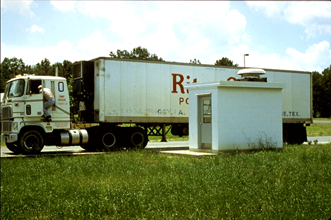| Sustainable Food Guide | Environmental Practice at Work © 2005  |
Issues | Local Issues...
"Food miles" (or kilometres) is a way of measuring the amount your food travels before it arrives in front of you. Food miles are the distance your food travels 'from the plough to the plate.' In the UK, the distance that food is transported by road increased by 50 per cent between 1978 and 1999 Go into any supermarket during the fruit and vegetable season and you will find apples from the USA & Canada (4,700 miles), onions from Australia and New Zealand (over 12,000 miles), carrots from South Africa (51,000 miles) or beans from Kenya (3,600miles). Every iceburg lettuce flown from Los Angeles uses 127 calories for every calorie of lettuce. Every carrot calorie from South Africa uses 66 calories in fuel. The average supermarket trolley of food has now travelled 3000 miles. "Food transport now accounts for 25 percent of all Heavy Goods Vehicle (HGV) kilometres in the UK, and consumers travel an average of 136 miles each by car to shop for food. Since 1974 the quantity of food transported by HGVs has doubled. In 2002, food transport produced 19 million tonnes of carbon dioxide, of which 10 Million tonnes were emitted in the UK and 9 million tonnes were generated by food imports. This represents 1.8 percent of the total annual emissions of carbon dioxide." (For more see DEFRA Report on Food Miles 2005). Airfreight of food has expanded significantly, partly because air fuel is not taxed. Flying food by air uses nearly 40 times the amount of fuel that sea transport uses, yet is now a regular feature of world trade. World Food Trade has increased twice as fast as population has risen over the past 20 years.
| ||||||||
| Photos courtesy of http://www.usda.gov |


